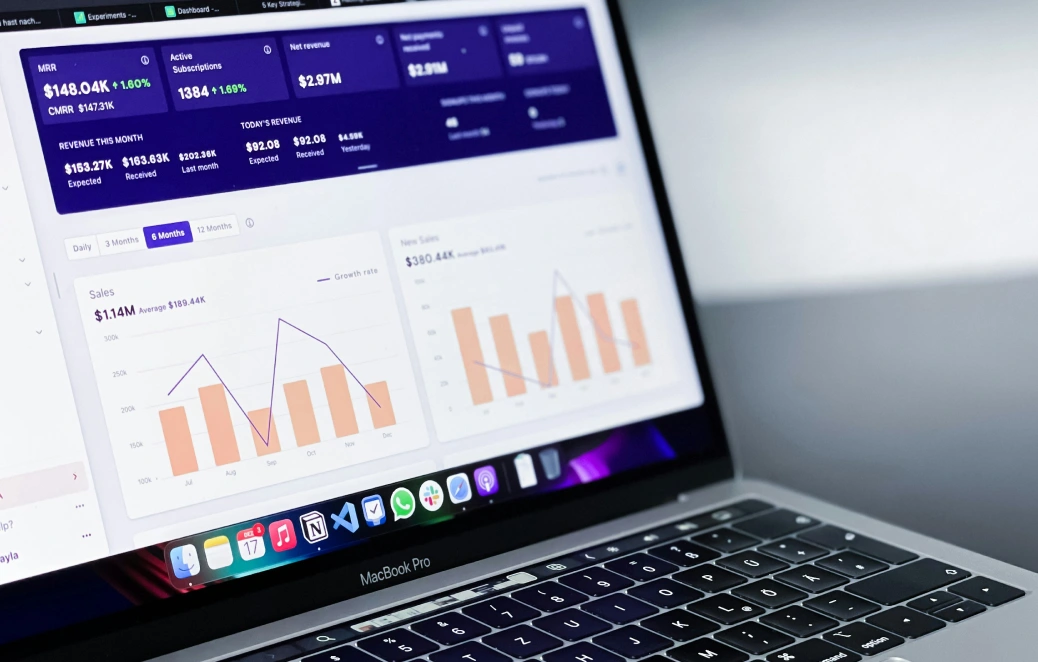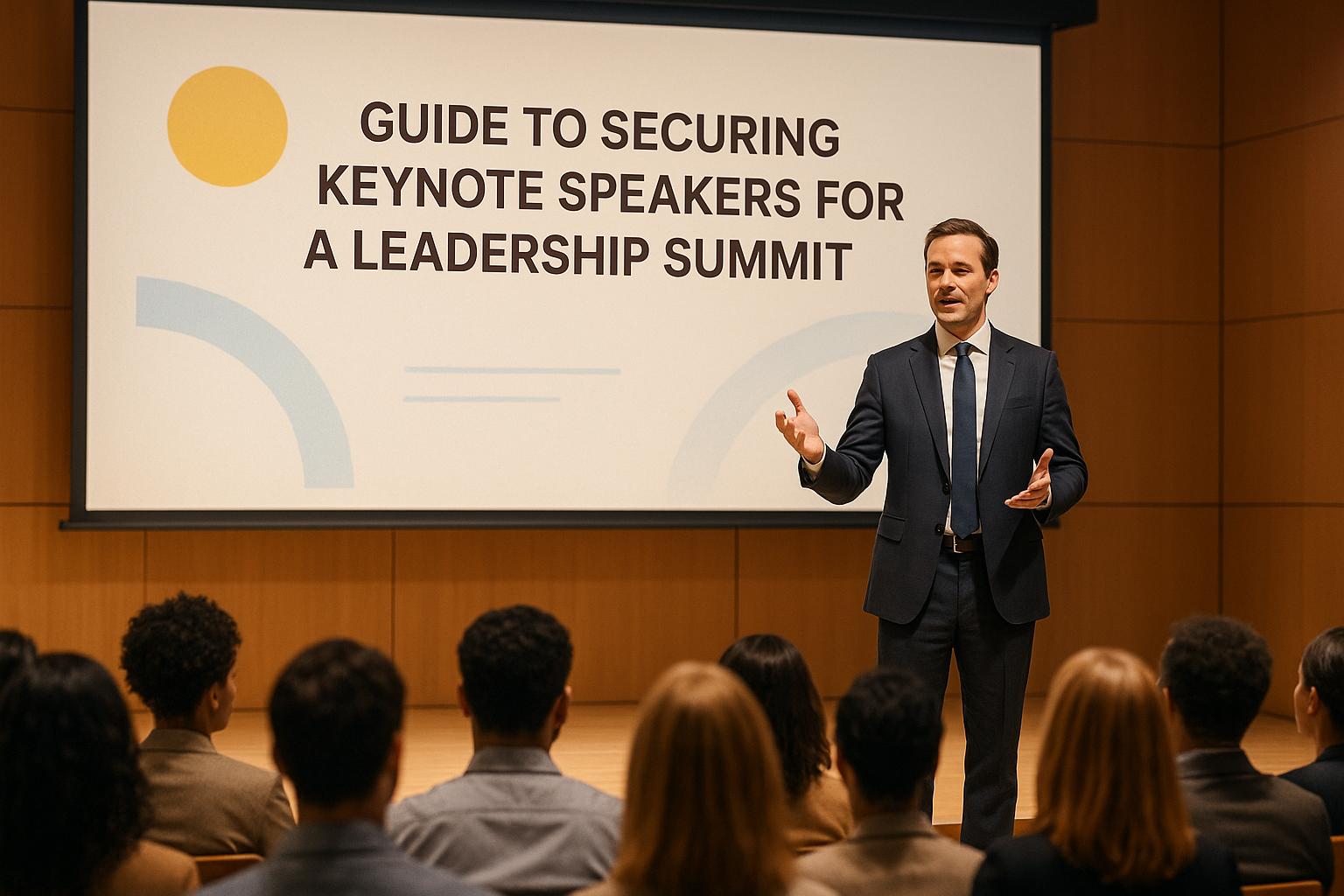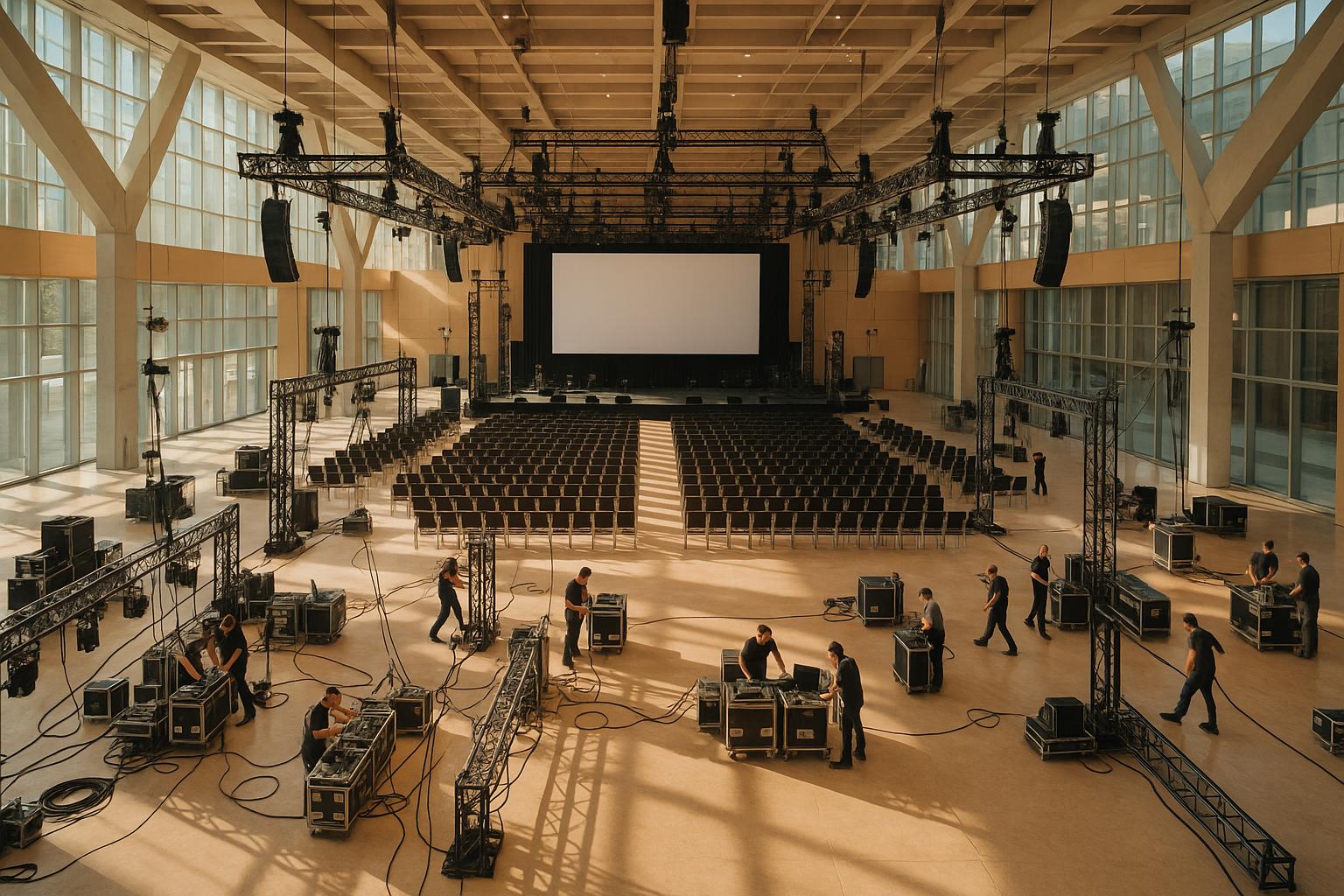Services Offered By Conference Production Firms

Chief Executive Officer

Conference production firms handle every aspect of organizing corporate events, from planning to execution. They specialize in creating engaging experiences using advanced audiovisual setups, custom stage designs, and hybrid solutions that connect in-person and virtual audiences. These firms also manage logistics, speaker support, and post-event analytics to ensure seamless events and measurable outcomes. Here’s what they offer:
- Event Planning & Management: Full-scale planning, venue sourcing, budget management, and vendor coordination.
- Audiovisual Services: High-quality sound, lighting, and visual setups tailored to each venue.
- Hybrid Event Solutions: Live streaming, interactive tools, and AI-powered networking for blended audiences.
- Custom Stage Design: Branded, functional stages that enhance presentations.
- Speaker & Technical Support: Rehearsals, teleprompters, and on-site troubleshooting.
- Post-Event Analytics: Real-time data insights, engagement metrics, and ROI tracking.
- Content Archiving: Recordings, transcripts, and feedback collection to extend the event's impact.
These firms simplify complex event logistics, letting businesses focus on their goals while ensuring events leave a lasting impression.
VODCAST EP 2: What is Full-Service Event Production?
Audiovisual Design and Production Services
The success of any conference often hinges on how well sound, lighting, and visual elements come together to create an engaging experience. Conference production firms excel in blending these technical components to deliver clear audio, striking visuals, and immersive environments that align with the event's purpose. Let’s dive into how these elements come to life through specialized systems and thoughtful design.
Complete Audiovisual Setup
Professional production teams craft audiovisual systems tailored to the unique demands of each venue. By conducting detailed site surveys, they ensure that every setup aligns with the venue’s acoustics, audience size, and presentation style.
- Sound systems are carefully calibrated, featuring wireless microphones, strategically placed speakers, and digital mixers for consistent audio quality. Larger venues may require more advanced configurations to maintain clarity.
- LED lighting systems offer adjustable colors and brightness, ensuring optimal visibility for both in-person audiences and live-stream participants.
- Visual displays, such as high-resolution LED walls, ultra-short throw projectors, and curved screens, deliver stunning visuals that adapt seamlessly to different lighting conditions.
Custom Stage and Scenic Design
Beyond the technical aspects, a well-designed stage can elevate the entire conference experience by reinforcing brand identity and captivating the audience.
Custom stage designs incorporate features like multi-level platforms, curved elements, and integrated screens to accommodate speaker movement, enhance camera angles, and allow for smooth transitions. These designs go beyond aesthetics - they actively engage attendees by aligning with the event’s messaging.
85% of event planners believe immersive experiences drive higher engagement among attendees.
The design process balances creativity with practicality. Scenic elements might include branded backdrops, environmental graphics, and architectural features that transform the venue into a cohesive storytelling space. These details work together to create a visual narrative that supports the event’s goals.
Corporate Optics, for example, specializes in crafting custom stage environments that double as branding tools. Their designs combine artistic flair with the technical capabilities needed for complex presentations and live broadcasts.
Well-designed stages not only boost engagement but also exude professionalism and enhance communication through optimized audiovisual setups.
Speaker Support and Content Management
Supporting speakers is a crucial part of creating a seamless event. Production teams handle everything from teleprompters and content uploads to rehearsals that test every technical component.
93% of planners anticipate using immersive technology - such as dynamic lighting, premium sound systems, and VR/AR - to engage attendees.
Speaker support now extends to interactive features like audience response systems and multimedia integration, moving beyond traditional slide decks. Technical directors collaborate closely with presenters to understand their preferences, creating tailored setups that complement their delivery style.
AI tools are also making waves in content management, helping to streamline workflows and ensure presentations run smoothly, from start to finish.
Event Technology Integration and Hybrid Solutions
Modern conference productions have evolved far beyond traditional audiovisual setups, embracing advanced technology to seamlessly connect in-person and virtual audiences. By leveraging comprehensive tech ecosystems, production companies are turning static presentations into dynamic, interactive experiences.
Interactive Event Technology
Gone are the days of passive presentations. Today, conferences focus on active audience participation, using tools like live polls, real-time Q&A sessions, and chat features to foster engagement.
80% of event marketers say that audience engagement is the top metric for measuring event success.
Event apps play a pivotal role in this transformation, acting as a central hub for attendees. These apps offer personalized schedules, networking tools, and direct access to sponsors and exhibitors. They also allow users to access presentation materials, take part in surveys, and contribute to word clouds, which display collective responses in real-time.
To make events even more engaging, gamification features such as digital scavenger hunts and photo walls are becoming increasingly popular. Interactive kiosks placed throughout event venues provide additional opportunities for attendees to explore content and connect with others.
AI-powered networking tools take personalization to the next level. Using advanced algorithms, these tools match attendees based on shared interests or professional backgrounds, offering customized agenda suggestions and smart scheduling to optimize networking opportunities.
Streamlining the registration process is another key focus. Custom registration sites collect attendee information efficiently, while touchless check-ins and digital badges simplify hybrid event logistics and make it easier for exhibitors and sponsors to capture leads.
Array's audience engagement solution is proven to engage over 90% of event participants and increase knowledge transfer.
Interactive tools are just one part of the equation. Advanced live streaming technology ensures that hybrid events deliver an engaging experience for every participant, whether they’re attending in person or online.
Live Streaming and Hybrid Event Production
Hybrid events demand a high level of technical coordination to ensure both in-person and virtual attendees feel equally involved. Production teams use multi-camera setups and dedicated streaming directors to create a seamless experience. While physical attendees enjoy the event naturally, virtual participants are guided through curated interactions.
The technical backbone of hybrid events includes dedicated streaming platforms that support multiple presentation tracks, live chats, and virtual exhibitor booths. Remote attendees can join 1:1 video meetings, participate in group discussions, and engage in polls and Q&A sessions alongside their on-site counterparts.
Corporate Optics exemplifies this approach with specialized hybrid production capabilities that flawlessly blend physical and virtual components, ensuring that online participants remain engaged.
To maintain audio quality, production teams use a dual-channel audio mix - one feed for the live venue and another tailored for the streaming audience. This ensures clear sound for both groups.
Hybrid breakout sessions, though challenging, are made possible with specialized platforms. These tools allow virtual attendees to join small group discussions, participate in workshops, and engage in networking activities that closely mirror the in-person experience.
But the real game-changer lies in how data is now shaping every aspect of event production.
AI-Powered Event Analytics
Artificial intelligence has revolutionized the way event performance is measured. Real-time analytics dashboards track audience engagement, participation, and content interaction as the event unfolds, enabling immediate adjustments to improve the experience.
AI systems process a variety of data streams simultaneously, including poll responses, chat activity, session attendance, and slide interactions. This level of analysis helps pinpoint which content resonates most with different audience segments.
Post-event analytics have also advanced significantly. Beyond simply tracking attendance, AI-powered platforms measure knowledge transfer by analyzing attendee interactions with content, identifying sessions that spark the most follow-up questions, and evaluating how networking efforts evolve into professional relationships.
Corporate Optics, in partnership with prompts.ai, utilizes artificial intelligence to enhance efficiency in corporate meetings and event production.
AI also provides detailed demographic analysis, offering insights into engagement trends across various groups, regions, and industries. Advanced analytics even capture micro-interactions that traditional metrics often miss - like how long attendees focus on specific slides or which interactive elements generate the most interest. This data helps organizers refine their strategies and create more impactful events in the future.
sbb-itb-ae35a94
On-Site Coordination and Complete Event Management
The success of a conference often hinges on how well on-site coordination is handled. While planning and technology lay the groundwork, it's the hands-on expertise of professionals managing everything in real time that ensures the event runs smoothly.
On-Site Staffing and Technical Support
"Smooth, reliable technology is the backbone of any successful meeting or conference."
Behind every seamless event is a team of technical experts working tirelessly to ensure everything operates without a hitch. These professionals arrive early to set up and test equipment, conducting sound checks, aligning screens, and checking connectivity to catch potential issues before attendees even walk through the door. This proactive approach eliminates common disruptions like microphone feedback or screen glitches.
During the event, technicians remain on standby, ready to resolve any issues on the spot. Whether it's fixing a connectivity problem during a hybrid session or assisting a presenter with their slides, these experts act quickly to keep things on track.
Their responsibilities go beyond basic troubleshooting. They deliver premium audiovisual solutions, from high-quality microphones and speakers to sharp projectors and screens, ensuring every participant has a clear and engaging experience. They also manage presentations, handling slides, videos, and multimedia transitions so presenters can focus on delivering their message without technical distractions.
"The event was great! Your guys were AMAZING! Thank you so much for your support!" - C. Cash at Schlumberger
Corporate Optics takes this a step further with customizable packages tailored to events of all sizes, from single breakout sessions to large multi-track conferences. Their dedicated teams stay on-site throughout the event, ensuring everything runs smoothly from start to finish.
While technical support is vital, it's just one piece of the puzzle. Comprehensive event planning ties everything together.
Complete Event Planning
Effective event planning transforms ideas into reality, covering every detail from concept to execution. This allows organizers to focus on the content while professionals handle the logistics.
Agenda development is a cornerstone of this process. Production teams collaborate with organizers to structure sessions, allocate time slots, and coordinate speaker schedules. They carefully design the program to maintain audience engagement, factoring in attention spans, natural breaks, and transitions between session types.
Venue sourcing is another critical element. Matching event needs with venue capabilities requires expertise. Production teams evaluate venues based on size, technical infrastructure, and accessibility. They handle contract negotiations, site visits, and ensure venues can adapt to any last-minute changes.
Vendor coordination involves managing relationships with service providers like caterers and security teams. Production staff oversee contracts, schedules, and quality standards, ensuring smooth collaboration. This is seamlessly integrated with technical setups to keep the event flowing effortlessly.
Corporate Optics simplifies the process with end-to-end event planning, which includes budget management, sponsor coordination, and registration handling. By consolidating these tasks into a unified strategy, they ease the workload on internal teams while delivering a polished event.
Speaker support goes beyond technical assistance. It includes arranging travel, accommodations, and presentation prep. Teams organize rehearsals, provide coaching on stage presence, and ensure speakers have everything they need to deliver confidently.
Even with meticulous planning, preparing for the unexpected is essential.
Contingency Planning and Security Coordination
No matter how detailed the plan, surprises can happen. That’s why contingency planning is a must for professional event management. Industry experts recommend setting aside 10-15% of the total budget for unexpected expenses, highlighting the importance of being ready for the unforeseen.
Contingency planning starts with a thorough risk assessment to identify potential challenges - logistical, technical, or environmental. Teams prioritize these risks by their likelihood and impact, focusing first on the most critical scenarios.
Proactive risk mitigation involves creating backup plans with clear roles and timelines. For technical issues, this means having spare equipment like laptops, microphones, and projectors on hand, strategically placed for quick access. Teams conduct rigorous tech rehearsals under real-world conditions, ensuring technicians are ready to respond instantly.
Staffing contingencies include maintaining a pool of on-call personnel to address last-minute shortages. Production teams carefully plan staffing levels to ensure adequate coverage, no matter the turnout.
For speakers, backup plans might include having substitute presenters or virtual participation options ready to go. Contracts often include cancellation policies, and teams prepare alternative content to ensure the program continues without major disruptions.
Communication protocols are key to keeping everyone informed. Clear channels are established to notify attendees, speakers, vendors, and staff about any changes. Flexible ticketing options allow attendees to switch between in-person and virtual participation if needed.
Security coordination focuses on both physical and digital safety. Event teams collaborate with venue security and, if necessary, local authorities to handle emergencies. For virtual and hybrid events, cybersecurity measures are implemented to safeguard attendee data and prevent unauthorized access.
A core contingency team - including technical experts, communication officers, customer support staff, and logistics coordinators - is always on hand to manage crises. Each member is trained to act swiftly, ensuring the event maintains its professional standards even under unexpected circumstances.
Post-Event Services and Analytics
Post-event services take all the data collected during an event and turn it into insights that can help measure success and shape future plans.
Post-Event Analytics and ROI Measurement
Determining the success of a conference isn’t just about counting how many people showed up. By building on the real-time analytics gathered during the event, post-event analysis dives deeper into the data to refine strategies for the future.
Engagement metrics offer a detailed look at how attendees interacted with the event. These include session attendance rates, the average time spent in presentations, activity during Q&A sessions, and how often the event’s technology platforms were used. For hybrid events, the data also highlights trends like when attendees switched between in-person and virtual formats, as well as moments when engagement spiked or dropped.
Lead generation and conversion tracking connects event activities to real business outcomes. By analyzing which sessions attracted qualified leads, tracking follow-up conversations, and monitoring how many of those connections turned into business opportunities, organizations can justify their event budgets and make smarter decisions for future events.
Speaker performance analytics shed light on which presentations resonated the most with attendees. Metrics like retention rates, post-session survey results, and social media chatter help organizers choose speakers and topics that will engage audiences in the future.
Corporate Optics offers post-event analytics as part of their event management services, turning complex data into clear reports. These reports not only demonstrate ROI but also provide actionable insights to guide strategic decisions for upcoming conferences.
Financial ROI calculations go beyond basic cost-per-attendee formulas. They include revenue from deals initiated at the event, savings from hybrid attendance options, and the long-term value of stronger client relationships. Often, the most meaningful results of a conference - like new partnerships or business deals - emerge weeks or even months after the event wraps up.
Content Archiving and Feedback Collection
Once the data has been analyzed, preserving content and collecting feedback can extend the event’s impact well beyond its conclusion. Professional services ensure that live presentations become lasting resources, and feedback systems provide the insights needed to improve future events.
Video and audio recording ensures that key sessions live on. The same tools used for live streaming can also capture high-quality recordings. Professional teams manage multi-camera setups, edit footage, and produce polished content that can be used for internal training, marketing, or on-demand viewing.
Content organization and accessibility make archived materials easy to find and use. By adding clear metadata, searchable libraries, and accessibility features like closed captions and transcripts, professional teams ensure that the content serves a wide audience effectively.
Comprehensive feedback systems gather detailed insights from attendees, speakers, and sponsors while the event is still fresh in their minds. Instead of relying on generic surveys, these systems collect session-specific ratings, suggestions for improvement, and preferences for future formats.
Strategic reporting turns this feedback into clear recommendations. By analyzing trends and identifying areas for improvement, professional teams provide actionable suggestions that often serve as the foundation for planning the next event.
Long-term content strategy helps organizations get the most out of their investment. Keynote speeches can become webinar series, panel discussions can be transformed into podcast episodes, and highlight reels can fuel marketing campaigns. This approach ensures the event’s reach and impact extend far beyond its original dates.
The Value of Professional Conference Production
Professional conference production firms play a critical role in ensuring the success of corporate events. They manage everything from initial planning to post-event analysis, tackling the intricate technical and logistical challenges that come with modern conferences.
One of the key aspects they bring to the table is technical expertise. Today's events demand advanced audiovisual systems, seamless technology integration, and reliable backup solutions - things most organizations simply don’t have the capacity to handle internally. These firms come armed with deep experience in managing equipment, navigating venues, and resolving issues on the fly, ensuring that events run smoothly from start to finish.
Another surprising advantage is cost efficiency. While hiring a professional firm may seem like a hefty upfront expense, their established vendor relationships, ability to make bulk purchases, and streamlined workflows often result in lower overall costs. Not to mention, they help avoid costly mistakes that can arise when inexperienced teams attempt to manage complex technical setups.
Risk mitigation is another area where these firms shine, especially as events increase in size and importance. They create detailed contingency plans to safeguard against technical glitches, protecting organizations from potential reputational and financial fallout.
Take Corporate Optics, for example. They exemplify this comprehensive approach by overseeing every aspect of an event, from the initial concept to post-event analytics.
Professional firms also excel in scaling services to match the size and scope of any event. Whether it’s an intimate 50-person meeting or a massive hybrid conference with 5,000 attendees, these companies have the resources and know-how to deliver consistent results. They also ensure events stay ahead of the curve by incorporating the latest tools and trends, such as AI-powered analytics, advanced live streaming, and interactive audience engagement platforms - technologies that might be out of reach for individual organizations.
FAQs
How do conference production firms create a seamless experience for both in-person and virtual attendees at hybrid events?
Conference production companies play a key role in creating seamless hybrid events by combining top-notch audiovisual gear with dependable streaming platforms. This ensures virtual attendees receive clear and engaging content. To keep both in-person and online audiences actively involved, they integrate interactive features like live polls, Q&A sessions, and chat options.
To uphold broadcast quality, these companies utilize professional-grade cameras, establish robust internet connections, and set up backup systems to prevent disruptions. They also leverage cutting-edge tools, such as AI-powered networking solutions, to facilitate meaningful interactions between virtual and on-site participants. These efforts come together to deliver a unified and engaging experience for all attendees.
How does AI improve the success and engagement of corporate conferences?
AI is transforming corporate conferences by creating customized experiences and offering predictive insights. By analyzing attendee preferences, it can personalize content, suggest relevant sessions, and facilitate meaningful connections through smart networking tools.
On top of that, AI streamlines event management by automating tasks like scheduling and addressing technical issues in real time. These advancements enhance the experience for both hybrid and in-person events, making them more dynamic, efficient, and engaging for everyone involved.
Why is post-event analytics crucial, and how does it help improve future conferences?
Post-event analytics is essential for measuring the success of a conference. It provides insights into key metrics like ROI, attendee engagement, and overall event performance. By diving into this data, organizers can uncover what resonated with attendees, spot areas that need improvement, and gain a deeper understanding of audience preferences.
This data-driven feedback helps fine-tune strategies for future events, allocate budgets more effectively, and design experiences that are both engaging and smooth. Using post-event insights ensures ongoing improvements and elevates the quality of upcoming conferences.
Related Blog Posts









